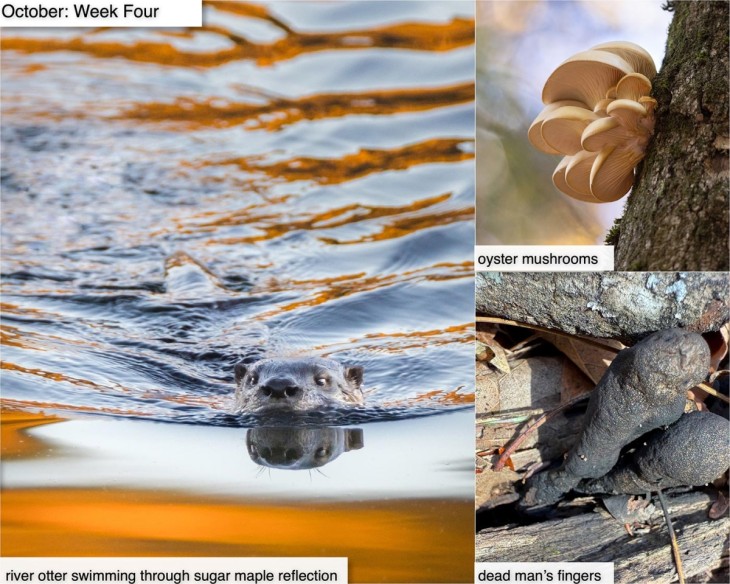This week in the woods, river otter families may be moving to new areas to hunt. Every year at this time, we find at least one family of otters (mother and this year’s young) in the same shallow stretch of river. They appear to be feeding on crayfish as well as spending lots of time wrestling with each other. If precedent holds, the otters will remain in this area until the river ice thickens so much that they can’t maintain entrance holes. At that point, they’ll disappear, perhaps moving inland and upland to hunt in smaller, faster-flowing tributaries and under the ice of beaver ponds.
This photo by Tig Tillinghast shows the mother otter swimming through the reflection of a sugar maple. Tig wrote this Outside Story article about the seasonal movement of otters.
This week we’ve also observed fungal “zombie fingers,” a.k.a. the dark fruiting bodies of dead man’s fingers, most likely Xylaria polymorpha (although perhaps a related species). These fungi are found on decaying hardwood and have a long growing season, from spring through late autumn, but we typically only notice them now, as Halloween approaches, when the lack of vegetation makes them more conspicuous. Look for them reaching out of the ground to grab the ankles of unwary children on a trail near you.
Oyster mushrooms are also showing up in abundance, growing on the wood of dead and dying hardwoods (as are toxic look-alikes – rookie foragers, proceed with caution). As Frank Kaczmarek notes in this Outside Story article, oyster mushrooms have an environmental superpower: “Along with being a prized edible, this fungus has an inherent ability to degrade polycyclic hydrocarbons – the major class of molecules found in oil – and has been used to clean up sites contaminated with diesel fuel.”
What have you noticed in the woods this week? Submit a recent photo for possible inclusion in our monthly online Reader Photo Gallery.


